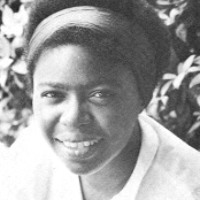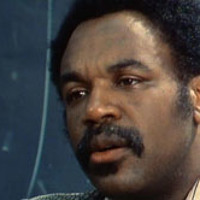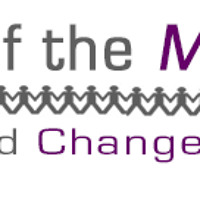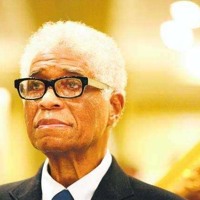Moments of the Movement
Friday, August 30, 2013
Dorie Ann Ladner and Dr. Joyce Ann Ladner
The Civil Rights Movement is sometimes portrayed as the courageous efforts of individual men and women whose bigger-than-life heroism transformed American society. While working to prepare for the March on Washington in 1963, two sisters from Mississippi, Dorie Ann and Joyce Ann Ladner, realized there was a far reach of supporters for the Movement—from the unnamed every day person to internationally renowned entertainers. These 19- and 20-year-old sisters also realized that the constant emphasis on big-name civil rights icons was leading them to become ambivalent toward some leaders in the Movement—one in particular.
Gwendolyn Simmons
Nearly 100 years after the Emancipation Proclamation, many of the Southern states in America were segregated and openly oppressive to African Americans. With themes of civil resistance, nonviolent protests, boycotts and voting rights at the heart of the Civil Rights Movement, there was another constant theme for Movement activists: danger. As a college student active with the Student Non-Violent Coordinating Committee (SNCC), Gwendolyn Simmons thought there was a surefire way to maximize her safety.
Esther Terry
When the Civil Rights Movement began to gain traction throughout the south, much of the credit for its success rightly went to the college students from the nation’s Historically Black Colleges and Universities (HBCUs). Well-trained and educated, these young men and women were some of the first to take bold action in the fight for desegregation. Dr. Esther Terry, past provost of the all-girls Bennett College in Greensboro, N.C., was a young student at the school in 1960 when she participated in the sit-in at a Woolworth lunch counter. Here, she explains why “Bennett Ladies” were motivated to participate.
David and Toko Ackerman
It seems almost natural that a movement with an aim of racial equity would include the young and the old, men and women, Northerners and Southerners, as well as various races. The husband and wife team of David and Toko Ackerman were true representations of this diversity. David, a self-proclaimed product of a lily-white community in Illinois, and his Japanese-born wife also reflect the various reasons that people were drawn to fight for change. The egregious racial violence in Selma, Ala., was Toko’s impetus to turn her attention toward race relations, while David’s involvement in the movement would occur almost by accident.
Courtland Cox
The 1963 March on Washington for Jobs and Freedom remains the most significant mass gathering in the Civil Rights Movement, and its success was largely due to the efforts of the many committee members who planned the event. As a student at Howard University, Courtland Cox served on the steering committee as a representative for the Student Non-violent Coordinating Committee, which gave him a front-row seat to back-room conversations. Here, he recalls the controversy over the speech John Lewis planned to deliver, criticizing the Kennedy administration.
Thursday, August 29, 2013
William Anderson - MOTM
As much as the Civil Rights Movement was driven by the men and women who boldly took steps toward change, it was clear that not much could be done without well-run organizations taking the lead. Americus, Ga., native Dr. William Anderson founded the Albany Movement in Georgia in 1961 in an effort to forge a broad-based coalition for change. In the process, he not only brought together thousands of local citizens, but caught the attention of national leaders, including Ralph Abernathy and Martin Luther King Jr.
Robert Hayling - MOTM
Dentist Robert Hayling has been hailed as the "father" of the Saint Augustine, Fla., civil rights movement. The NAACP recruited Hayling in the early 1960s to organize demonstrations and coordinate visiting activists, including Martin Luther King Jr. in Saint Augustine. Using his dental office as a training ground for many of the motivated teens of the NAACP’s Youth Council, Hayling, through his organizing efforts, brought the city’s African-American population some rewards, but at a professional and personal cost.
Subscribe to:
Comments (Atom)




